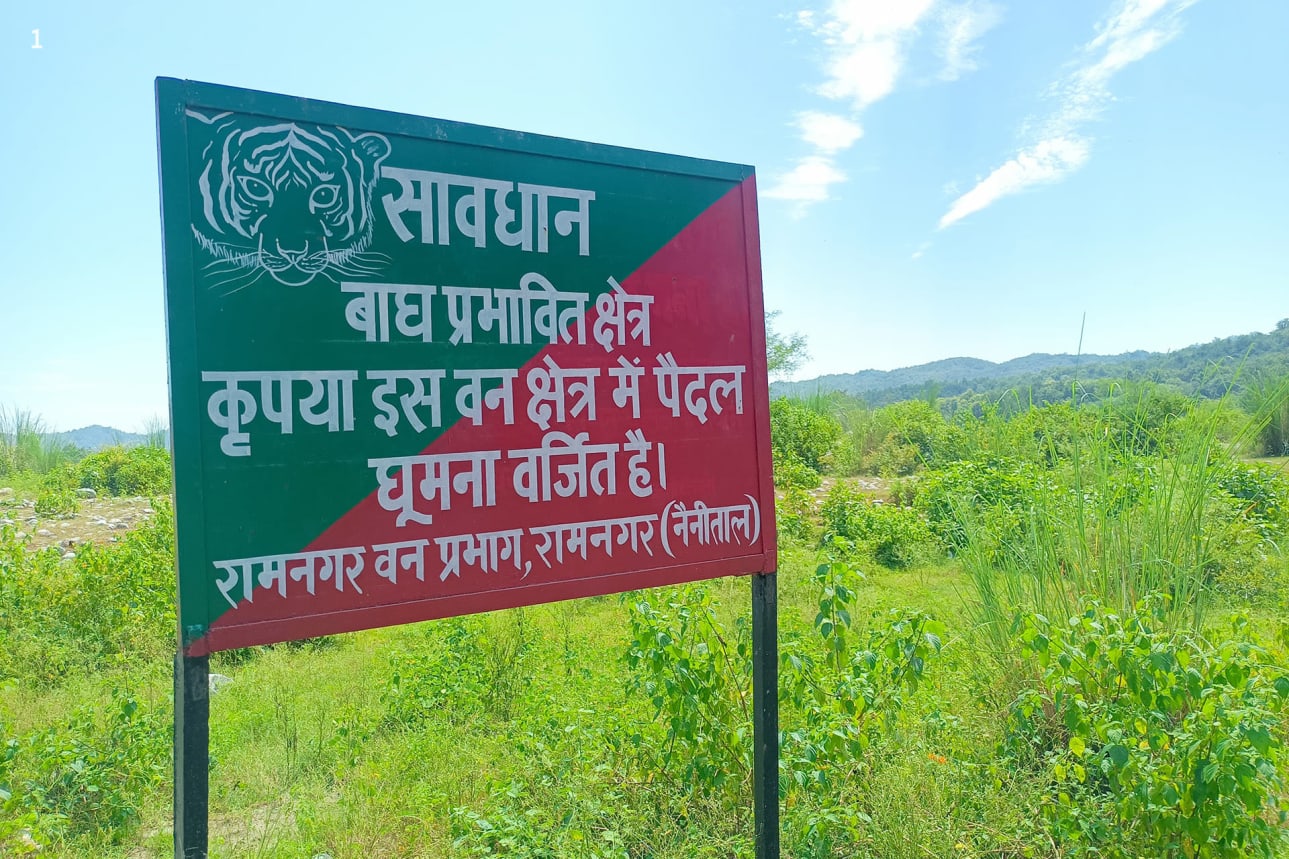 Listen to this article
•
15:34 min
Listen to this article
•
15:34 min
The Corbett Tiger Reserve (CTR), located in Uttarakhand, has gained global recognition for its remarkable tiger population of over 250 individuals. As one of India’s top protected areas, it earned more than 13 crores of revenue from ecotourism and accommodated more than 3.5 lakh visitors in this fiscal year 2022-23 . However, in recent times, the reserve, along with the adjacent Ramnagar forest division (RFD), has attracted attention for a series of unfortunate events.
On June 15, 2022, a first-of-its-kind incident unfolded within the Sarpduli Range of the reserve. In broad daylight, around 3 pm, a tiger attacked a labourer while he was riding a motorcycle merely one and a half kilometres away from the Dhangadi Gate. The forest officials, after discovering his unattended bike, investigated and recovered the labourer’s lifeless body concealed in the bushes, approximately 50 meters from the road. The tiger had not consumed the body, but it was mutilated. Before the authorities could fully respond to the situation, another incident transpired in the same area on June 17, 2022. A contract labourer, also riding a motorcycle, fell victim to a tiger’s attack. Fortunately, a safari Gypsy arrived at the scene just moments after the tiger had pounced on the person. The driver of the vehicle successfully managed to drive away the tiger and rescue the injured individual.

Cover Photo: Protected areas in India lack connecting corridors, and many species stray into human-dominated spaces looking for prey. This tiger was shot on camera trap in the buffer zone of Corbett Tiger Reserve, on a private property. Photo: Shivang Mehta
To investigate these incidents, the forest department set up camera traps at different locations and initiated forest patrols on elephants and on foot. I was a part of the committee constituted to monitor the progress and tranquillise the tigers based on my experience of working in the landscape as a conservation biologist for the last 15 years. On July 8, 2022, while the field staff was surveying the area, a tigress, known to frequent the area, displayed aggressive behaviour towards the team. An expert veterinary officer decided to immobilise the tigress and transport her to a nearby rescue centre.
During the ongoing operation, yet another incident occurred on the night of July 16, 2022. A tiger attacked a motorcycle on National Highway (NH) 309 near Mohan village, a forested village on the outskirts of the reserve. One of the individuals was seized by the tiger from the bike and taken into the dense bushes, while the other managed to escape. On July 17, 2022, the search teams discovered his dead body.
During the search operations, investigators faced a daunting challenge. Over six to seven tigers inhabited the area of approximately three to four square kilometres. How does one identify the ones responsible for the attacks? These individuals were active in the Sarpduli Range and the Kosi Range of Ramnagar Forest Division. The boundary between the two is demarcated by NH 309. Despite the presence of vehicular traffic, tigers and elephants have crossed the highway to follow their natural routes without any event. However, these attacks on people on bikes were a first. We suspected that the individuals behind the attacks may be related, especially a tigress and her adult offspring. Perhaps, the offspring learned to hunt bikers by watching their mother. However, we couldn’t confirm this at such short notice. Remarkably, the area remained incident-free through the four-month monsoon season.
In addition to intensive patrolling and camera trap operations, authorities installed warning signs and banners along the highway. However, despite these warnings, people were spotted taking pictures or selfies in the forested areas along the highway. Before the authorities could get the situation under control, a person was killed on the night of December 12, 2022, near Mohan village. There were also regular reports of a tiger attempting to attack motorcycles. Recognising the gravity of the situation, Article 144, was imposed on a section of the national highway between the villages Sundarkhal and Mohan. Section 144 of the Code of Criminal Procedure (CrPC) is issued in urgent cases of security threat and bans the assembly of five or more people in an area where it has been imposed. Despite the efforts of the forest department, another incident took place on the evening of December 24, Christmas Eve, when the resorts in the area were bustling with guests, and there was heavy traffic on the national highway. At around 7.30 pm, near Panod Nullah, a tiger attacked three individuals who were riding a two-wheeler. Two of the individuals managed to escape, while the search team recovered the deceased individual's body the following day.
The consecutive attacks in December placed immense pressure on the forest department. Among the tigers under surveillance, a tigress was discovered trapped in a cage set up by the search team in Dudhwa Beat of the Kosi Range, located just 100 meters from the national highway, on January 18, 2023. A forensic report confirmed the tigress’s involvement in previous attacks.
The operation continued since we were convinced that there was more than one individual behind the attacks. Another suspected male tiger was successfully tranquillised on the night of February 16, 2023, in a forested area across the highway near Panod Nullah within CTR. The tiger was moved to a rescue centre.
With the capture of the last suspected tiger, there is hope that normalcy will be restored in the area under operation.
However, why these tigers were attacking people, particularly on bikes, is a question that still remains to be answered and will require more research.
One of the reasons could be the increasing pressure of tourism on this forest. There are about 10 different tourism zones within the reserve, of which one was added about eight years ago, and two more were added within the last five years. Moreover, new tourism zones have been opened in the adjoining Terai-West and Ramnagar Forest Division. The number of tourists has also increased exponentially. People and vehicles move through the forest in the morning and evening. Could this have led to tigers losing their fear of people and vehicles?
It is essential to find a viable solution to establish peaceful coexistence that ensures the safety of people commuting on the highway, as well as the safety of those residing in nearby villages. Efforts should be made to foster a harmonious relationship between humans and wildlife, promoting the long-term conservation of these magnificent creatures while ensuring the well-being of the local communities.












